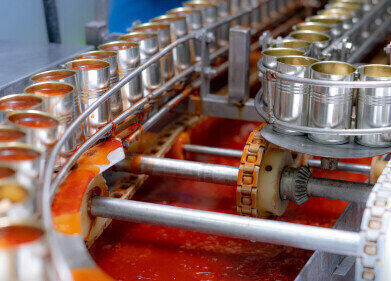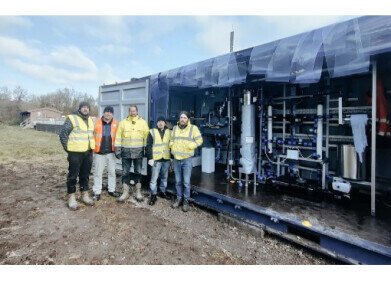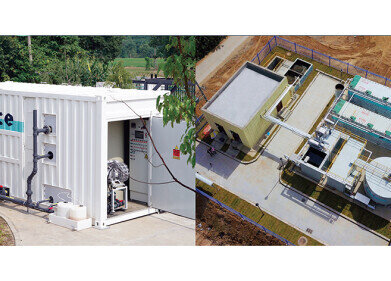Wastewater treatment
GE’s Next-Generation MBR Wastewater Treatment System Slashes Energy Use, Boosts Productivity
Jul 20 2011
GE (USA) has introduced a next-generation membrane bioreactor (MBR) wastewater treatment technology called LEAP mbr, which addresses pressing water quality and operational cost issues faced by owners of municipal, industrial and residential water/wastewater treatment facilities worldwide.
The result of a four-year development effort, the new LEAPmbr system offers the lowest lifecycle costs available from any MBR technology, while also being cost-competitive with conventional treatment. These cost savings, along with operational simplicity and a compact footprint, derive from innovations to the popular GE ZeeWeed* 500 MBR product line—the most widely-used, reinforced hollow-fibre ultrafiltration technologies available. The cost and efficiency savings of the GE LEAPmbr system compared to existing GE MBR technologies include:
A minimum 30percent reduction in energy costs;
A 15percent improvement in productivity (greater water-treatment capacity);
A 50percent reduction in membrane aeration equipment and controls, leading to a simpler design with lower construction, installation and maintenance costs;
A 20percent reduction in physical footprint leading to further reduced construction and installation costs as well as lower ongoing consumption of cleaning chemicals.
Development of the LEAPmbr system was driven by GE’s product innovation and development capabilities and more than 25 years of experience with proven, highly reliable MBR technology in diverse applications around the world.
“MBR technology is one of the fastest-growing water-treatment technologies in use today, and GE has just made it an even better and more economic choice for greenfield plants, expansions and retrofits alike,” said Jeff Connelly, vice president, engineered systems—water and process technologies for GE Power & Water. “In developing this major new product, we knew energy costs and reduced operating budgets would be key customer concerns because we face the same challenges ourselves. Moreover, because MBR technology is increasingly displacing conventional wastewater treatment methods, operational simplicity is key for those who are new to MBR; and for customers who are space-constrained, a compact footprint is a make-or-break proposition. Our LEAPmbr system addresses all of those issues.”
One of the key growth markets for MBR technology overall is the global municipal wastewater treatment sector. Until now, this sector has waited for the costs of newer MBR technologies to become Page 2of 3GE more competitive with existing applications.
The new LEAPmbr system answers the MBR cost question while offering customers a 21stcenturysolution to comply with more stringent water quality requirements.
MBRs replace the solids-separation function of secondary clarifiers and sand filters used in conventional activated sludge systems. GE’s MBR technology consists of a suspended-growth biological reactor integrated with GE’s high-performance, rugged ZeeWeed hollow-fibre ultrafiltration membranes.
The ZeeWeed membranes are immersed in a membrane tank, in direct contact with the water to be treated, which is known as mixed liquor. Through the use of a permeate pump, a vacuum is applied to a header connected to the membranes. The vacuum draws the water through the ZeeWeed membranes, which filter out solids, along with bacteria and viruses. The filtered water, or permeate, then can be further treated, reused or discharged as needed.
ZeeWeed has been proven in more than two decades of wastewater treatment and water reuse. Nearly 1,000 plants worldwide use this technology to meet or exceed stringent wastewater treatment and water reuse standards.
GE unveiled its LEAPmbr technology during Singapore International Water Week, which takes place July 4-8, 2011.
Events
Carrefour des Gestions Locales de L'eau
Jan 22 2025 Rennes, France
Jan 29 2025 Tokyo, Japan
Feb 05 2025 Nantes, France
Feb 16 2025 Kampala, Uganda
Feb 26 2025 Chennai, India










